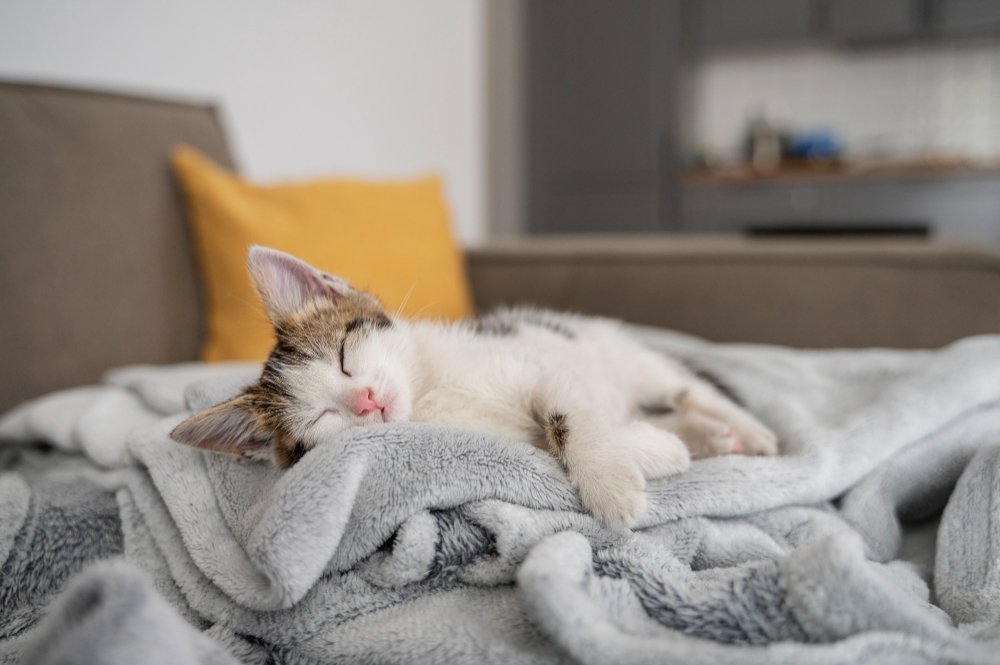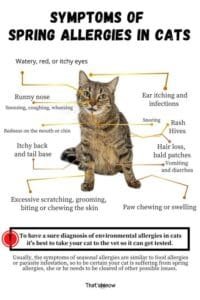Keeping your cat’s bedding fresh and clean supports hygiene, reduces allergens, and helps create a comfortable resting space for your cat.
If you’re a cat owner, you know how much your feline friend loves luxurious napping spots. Whether it’s a cozy bed, a plush blanket, or a comfy pillow, their sleepy sanctuaries should always be fresh and clean. But how can you ensure that your cat’s bedding stays pristine without constant washing? In this article, we’ll explore some simple yet effective tips to keep your cat’s bedding fresh and clean, ensuring a comfortable and hygienic resting place for your purrfect companion. So, let’s get started and discover the secrets to maintaining a fresh haven for your adored furball.
Keeping Your Cat’s Bedding Fresh And Clean
Choosing the Right Bedding
When it comes to choosing the right bedding for your cat, there are a few factors you should consider. Firstly, you’ll want to think about the material. Cats have different preferences, so it’s important to find a fabric that your furry friend finds comfortable. Some popular options include cotton, fleece, and microfiber. Each material offers different benefits, such as softness or heat retention.
Another important consideration is washability. Cats can be messy creatures, so it’s essential to choose bedding that is easy to clean. Look for options that are machine washable and dryer safe. This will make your life much easier when it’s time for a bedding refresh.
Lastly, size and shape matter. Cats love to stretch out and lounge, so make sure to choose a bed that provides enough space for your feline friend to comfortably relax. Consider your cat’s sleeping habits and preferences when selecting the size and shape of their bedding.
Regular Cleaning Routine
To keep your cat’s bedding fresh and clean, establishing a regular cleaning routine is essential. This not only helps maintain hygiene but also ensures your cat is comfortable and happy in their cozy sleeping spot.
Frequent washing is key to keeping your cat’s bedding clean. Aim to wash it at least once a week, or more often if your cat tends to leave behind a lot of fur or dirt. This will help prevent the build-up of allergens and unpleasant odors.
In addition to regular washing, it’s important to remove hair from the bedding on a regular basis. This can be done using a lint roller or a pet hair brush. By keeping the bedding free from excessive hair, you’ll reduce the chances of your cat breathing in loose hairs, which can lead to hairballs or respiratory issues.
When washing the bedding, be sure to utilize pet-friendly detergents. Avoid using harsh chemicals or strong fragrances that could irritate your cat’s sensitive skin. Opt for gentle, hypoallergenic detergents that will effectively clean the bedding without causing any harm to your furry friend.
Handling Accidents and Stains
Accidents happen, and when they do, it’s important to act fast to minimize any damage to your cat’s bedding. Whether it’s a urine stain or a spill, taking prompt action can help prevent odors and stains from setting in.
If an accident occurs, the first step is to blot the stain. Use a clean towel or paper towels to blot the affected area and absorb as much liquid as possible. Avoid rubbing the stain, as this can push it deeper into the fabric and make it more difficult to remove.
Once you’ve blotted the stain, it’s time to use enzymatic cleaners. These specialized cleaners break down the organic matter in the stain, eliminating both the stain and the odor. Follow the instructions on the cleaner carefully, and make sure to thoroughly rinse the affected area to remove any residue.
Maintaining Odor Control
Nobody wants a smelly cat bed, so maintaining odor control is essential to keep both you and your furry friend happy. There are a few tricks you can use to banish unwanted odors from your cat’s bedding.
Proper ventilation is key. Ensure that the area where your cat’s bed is located has good airflow. This will help prevent the build-up of odor-causing bacteria. If possible, open a window or use a fan to keep the area well-ventilated.
Another effective method to combat odors is to sprinkle baking soda on the bedding. Baking soda is a natural deodorizer that can help absorb and neutralize unpleasant smells. Simply sprinkle a thin layer of baking soda over the bedding, let it sit for a few hours, and then vacuum it up. Your cat’s bed will be left smelling fresh and clean.
If you prefer a pleasant scent to mask any odors, consider using lavender or citrus-scented products. Cats generally enjoy these scents, and they can help keep your cat’s bedding smelling pleasant without overwhelming their sensitive noses.
Preventing Fleas and Ticks
Fleas and ticks can be a nuisance for both cats and their owners. To keep these pesky insects at bay, it’s important to take preventative measures and choose the right bedding.
When selecting bedding, choose options that are flea-resistant. Look for materials that are tightly woven, as this can help prevent fleas and ticks from burrowing into the fabric. Some bedding options even come treated with insect-repellent substances.
Regular flea treatments are also crucial in preventing infestations. Consult with your veterinarian to determine which flea treatment is best for your cat, and be sure to administer it according to the recommended schedule. This will help protect your cat and keep their bedding flea-free.
Additionally, it’s important to regularly check for signs of fleas or ticks on your cat’s bedding. Be on the lookout for tiny black specks (flea dirt) or any apparent insects. If you notice any signs of an infestation, take immediate action to eliminate the problem and treat your cat.
Protecting Against Allergens
If you or your cat suffers from allergies, it’s crucial to choose bedding that will minimize allergens and reduce discomfort. Opting for hypoallergenic bedding is a great way to keep allergens at bay.
Hypoallergenic bedding is made from materials that are less likely to cause allergic reactions. These materials are typically resistant to dust mites, mold, and other common allergens. Look for bedding that is labeled as hypoallergenic to ensure it meets your cat’s needs.
In addition to using hypoallergenic bedding, consider using allergy covers on your cat’s bed. These covers act as a barrier against allergens, preventing them from settling into the bedding and causing allergic reactions. Make sure to wash the covers regularly to maintain their effectiveness.
Regularly washing your cat’s bedding is another important step in reducing allergens. By washing the bedding frequently, you’ll remove any allergens that may have accumulated, making the environment healthier for both you and your cat.
Avoiding Mold and Mildew
Moisture can lead to the growth of mold and mildew, which can be harmful to your cat’s health. To avoid these issues, it’s crucial to take precautions and properly maintain your cat’s bedding.
Keeping the bedding dry is the key to preventing mold and mildew. If your cat has accidents or spills water on the bed, make sure to blot and dry the area thoroughly. Avoid leaving the bedding damp for extended periods of time, as this provides the perfect environment for mold and mildew growth.
Sunlight exposure can also help prevent mold and mildew. If possible, place your cat’s bedding in a sunny spot where it can receive direct sunlight. Sunlight has natural antibacterial properties and can help kill any mold or mildew spores that may be present.
When not in use, it’s important to store your cat’s bedding properly. Make sure it is completely dry before storing it away. Consider using breathable storage bags or containers to prevent moisture build-up and allow air circulation.
Providing Comfort and Support
Just like humans, cats appreciate comfortable and supportive bedding. Choosing the right materials and designs can help ensure your cat gets a good night’s sleep and wakes up feeling refreshed.
When selecting bedding, choose cushioned options that provide a soft and cozy surface for your cat to rest on. Look for beds with memory foam or padded inserts for extra comfort. These materials conform to your cat’s body shape and offer support to their joints, promoting better overall health.
Consider the type of bed that your cat prefers. Some cats prefer enclosed spaces, while others enjoy stretching out on an open bed. Observe your cat’s behavior and sleeping habits to determine the best shape and style of bedding for them.
Ensuring adequate support is essential for your cat’s well-being. Avoid beds that are too soft or lack proper support, as this can lead to discomfort and even joint problems over time. Remember, a happy and well-rested cat is a healthy cat.
Regular Inspection and Replacement
Regularly inspecting your cat’s bedding is important in ensuring their comfort and safety. Keep an eye out for any signs of wear and tear, as well as any damage that may need to be addressed.
Check the bedding for any loose threads, holes, or frayed fabric. If you notice any damage, it’s essential to repair or replace the bedding as necessary. This will prevent your cat from accidentally swallowing threads or getting stuck in small holes, which could lead to injuries.
In addition to wear and tear, monitor your cat for signs of discomfort during sleep. If you notice your cat avoiding their bed or displaying restlessness, it may be a sign that the bedding needs to be replaced. Cats are creatures of habit and can become attached to their bedding, so it’s important to offer them a clean and comfortable sleeping surface.
Additional Tips and Considerations
Apart from the main factors discussed above, here are a few additional tips and considerations to keep in mind when choosing and maintaining your cat’s bedding:
- Rotate the bedding regularly to distribute wear and keep it fresh.
- Avoid heavily scented products, as cats have sensitive noses and may find strong fragrances overwhelming.
- Take into account your cat’s preferences and personality when selecting bedding. Some cats may prefer elevated beds, while others may enjoy cuddling up in blankets.
Remember, your cat’s comfort and well-being should always be a top priority. By choosing the right bedding, establishing a regular cleaning routine, and taking preventative measures, you can provide your feline friend with a cozy and fresh sleeping environment that they’ll love.



